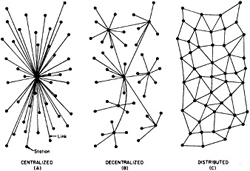Setting the Scene

Governments and companies are searching again for the silver bullet. Mobility, connectivity, centralized or decentralized systems, closed or open models are back on the table. Yet few people remember that we have been here already, as many of the topics discussed are not that new, but are advertised under a new label in order to gain a futuristic touch.
A glance back over the Internet’s shoulder at its early history should therefore be enlightening. This is especially true because as yet no satisfying analysis exist which could throw light onto the specific European situation, or provide answers to the overriding questions: what phases did Europe go through and who were the actors? Who in Europe supported – or foiled – early plans for internetworking?
Prime new Vistas
European scientists who have been involved in the field for long enough can not escape the impression that we already might have been at a similar watershed before. In fact, the scientific contest that unfolds today between the regions of the world bears clear resemblances to a not so distant European past. This suggests to take a step back and to closely review the history of network research in Europe, starting from time when undisputed support for non-IP based communication was a practical reality here. It was the time when telephone circuit switching was the prevalent paradigm, when the network terminals were deliberately kept dumb, and when the fundamental design decisions dictated to “put the intelligence in the core”. With hindsight, we may attribute such distorted views to a lack of criteria and systematic knowledge about parameters and patterns that influence the evolution of network technology, protocols, and services. Several decades later, this knowledge is now available, albeit not in a documented and organized fashion that could support a strategic decision making process.
A Chance for Europe?
What can be learned from EEC discussions from 1960 onwards? Early on, economists and politicians discussed the subject under the label: Gaps in Technology, a phrase which even now doesn't sound outdated, as well as the phrase: Europe has a marketing problem, not a scientific one. As an example of a recent event, which came up with the same conclusion: State of the European Union, conducted by INSEAD and Booz & Company (June 28. – 29. 2011) See for example the panel discussion about re-marketing Europe.
On the other hand, it appears that in the early days scientists didn't have much of a problem exchanging ideas or having open discussions about possible network designs. “They all fit in one room on one table” is an often-repeated quote from computer networking’s infancy. What was the impact of that transatlantic inter-network and how did it work? What was the key factor: shared interest between the scientists involved, or the ignorance of both politicians and the general public? When did the political layer pop up and what was the effect? Did and do European scientists learn the political part of the game?
Can parameters be identified which could eventually lead to the success of Europe's Future Internet plans? What ingredients are needed, not only politically, scientifically and economically, but also on the level of communications? It appears that a link is needed that can pull interest groups together.

